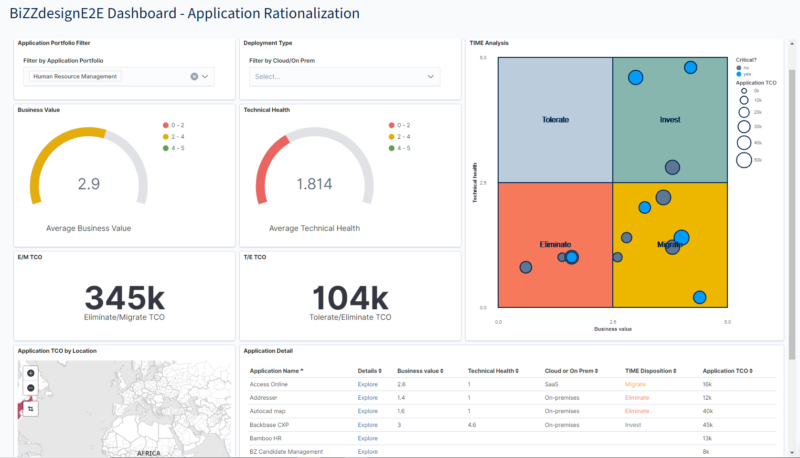When you ask any Enterprise Architect what their number one goal is, they often respond that it’s to optimize the architecture to support organizational change. Our enterprise architecture platform is geared toward doing this: Bizzdesign Horizzon helps organizations thrive through change.
In line with our mission, we’ve recently added a Data Contribution feature to our platform. With this consumable feature, we’re enabling stakeholders across the organization (i.e., non-architects) to collaborate and contribute to the rich Knowledge Graph in Bizzdesign Horizzon.
When you ask different experts in the organization to source and manage data, you increase the quality and accuracy of the data. The OCIO can use the Knowledge Graph to create insights into current state architecture, create future state designs, and plan the roadmap toward a future state. In other words, to enable transformational change quickly and easily.
Data Contribution enables you to define conventions and policies and provide a personalized experience for stakeholders so they can easily maintain the data they’re responsible for. Stakeholders can contribute data manually or automated (i.e., with Bizzdesign Integration for ServiceNow).
When you set up Data Contribution, it’s important that collaborators do their work in an effective and controlled way. In this blog, we give you an example scenario in which Enterprise Architects and subject matter experts (in this case, the HR team consisting of HR Application Managers and HR Business Directors) work together in a (virtual) Bizzcorp organization to build and connect business, application and technology portfolios. The result is an optimized architecture to support organizational change in the organization.
The next step is then for you to define policies to ensure that the different HR team members contribute their expertise. In this scenario, the HR Application Manager is asked to manage applications, its relations and their properties. The Business Director is tasked with managing capabilities and its relations. It is possible to define policies for individual users or user groups.
Optionally, you can specify which user (groups) are responsible for maintaining which properties of objects. This mechanism is explained here.
When you’ve completed this step, it makes it easier for the HR team to manage and maintain the data they’re responsible for.
Based on the defined conventions and policies you’ve set up for stakeholders, members of the HR team will have a personalized experience when they login to Bizzdesign Horizzon. The HR Application Manager can use this personalized experience to add his applications to the portfolio and link it to supporting technologies.
The HR Business Director has a contribution page to link capabilities to applications.
Furthermore, the HR Application Manager can periodically maintain the properties of the applications portfolio, as explained here.
With this distributed approach to data management, the expertise of different stakeholders can be combined to populate the portfolios. The conventions and policies help to increase the data quality because contributors focus only on contributing and managing data in their area of expertise.

Bizzdesign customers are invited to join us for our Q4 Product Update session where we cover our latest features:
Alternatively, if you need more information on the Data Contribution feature, go to our Support pages or contact your Customer Success consultant.